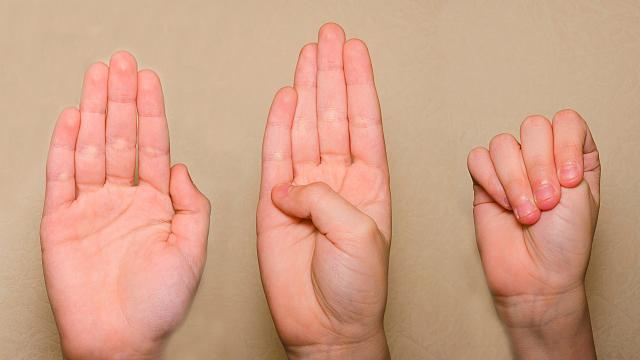The “Signal for Help” is a simple gesture — display your hand, palm out, then close your fingers over your thumb — but it could save your life.
Just last week, a 16 year-old girl who was reported missing in North Carolina was rescued in Kentucky after flashing the sign to a passing motorist. According to the Laurel County Sheriff’s Office, the unnamed teenager was “making hand gestures that are known on the social media platform ‘Tik Tok’ to represent violence at home — I need help.”
A fellow motorist recognised the sign and phoned police, then tailed the car for several miles, relaying information to the authorities. After a traffic stop, police in Kentucky arrested 61 year-old James Brick and charged him with first-degree unlawful imprisonment and a second charge related to possession of material showing a sexual performance by a minor, for material found on his phone. The girl was reunited with her family.
The hand signal was created by The Canadian Women’s Foundation at the beginning of the pandemic lockdown, and awareness of it has spread on TikTok and other social media platforms. The intention was to give domestic violence victims a way to silently signal distress during a video call in a way that would leave no digital evidence for their abusers to find. Here’s a video dramatization of the signal in action.
What to do if someone flashes a distress signal to you
If a random passenger flashes the sign at you on a highway, you should probably call the police, but things are a little trickier if you receive the sign from a friend or acquaintance.
According to the Canadian Women’s Shelter, the sign doesn’t mean “call the authorities right away.” It means “reach out to me safely.” If someone you know flashes the help signal on a video call, the Canadian Women’s Shelter suggests you, “check in with the person safely to find out what they need and want you to do.” The idea is to let the person who flashed the signal take the lead, instead of assuming you know what they want or need.
The Canadian Women’s Shelter also suggests responding to the sign by asking questions that can be answered “yes” or “no,” in case someone is listening to the other half of the conversation. So go with, “Do you want me to call 911?” or “Should I look for some services that might help you and call you back?” instead of “Tell me what’s happening.”
They also suggest contacting the person through another form of communication, and asking innocent-seeming questions like “How are you doing?” or “Get in touch with me when you can.”
What if the abuser knows the signal too?
These kinds of duress signals can be a double-edged sword. They rely on a lot of people knowing about them to work, but that means abusers are more likely to know about them as well. The originators of the Signal for Help stress that the signal is only one tool, that can be used some of the time, to indicate people need help. It’s not a miracle solution.
It’s still worth it to know. A simple, recognisable hand gesture can be used much more discretely on a video call than a spoken phrase, and, unlike an email or text, there won’t be any trace of it left to discover when the call is over.

Leave a Reply
You must be logged in to post a comment.